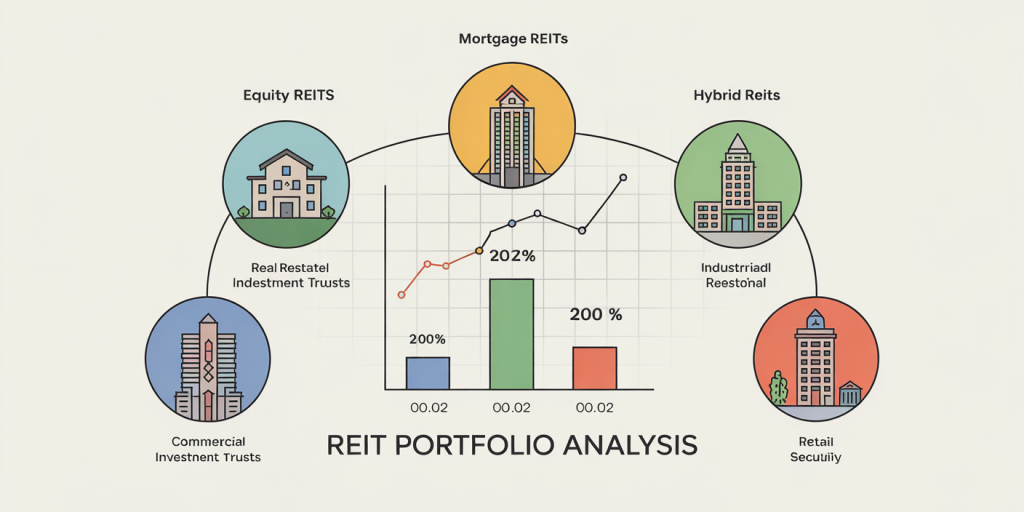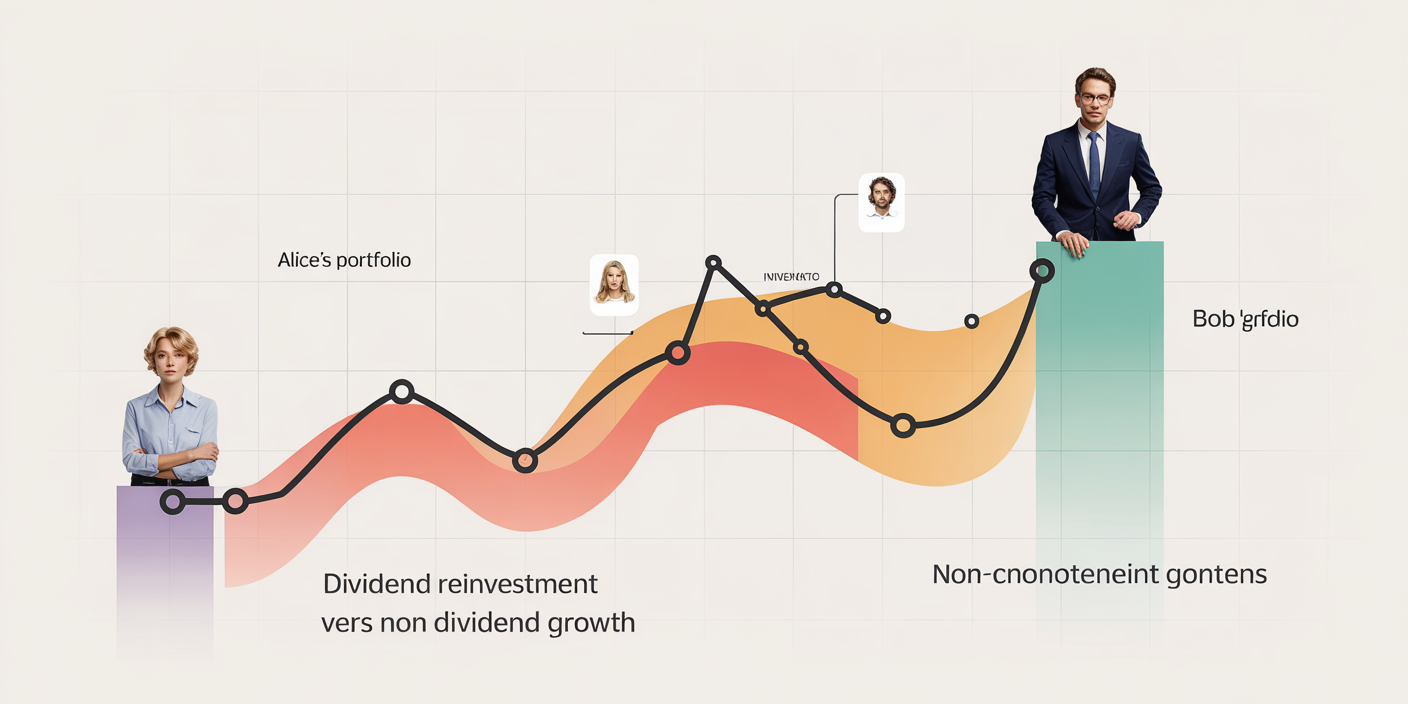How to Use REITs to Generate Passive Income
Real Estate Investment Trusts (REITs) have become a powerful vehicle for investors seeking to diversify their portfolios and generate steady passive income. By pooling capital to invest in income-producing real estate, REITs offer a unique combination of liquidity, diversification, and relatively high yields compared to traditional stocks and bonds. This article explores practical ways to use REITs for passive income generation, supported by examples, data, and clear strategies tailored to various investment goals.
Understanding REITs and Their Income Potential
REITs are companies that own, operate, or finance income-generating real estate across diverse sectors such as residential, commercial, industrial, healthcare, and retail. The unique requirement for REITs to distribute at least 90% of their taxable income as dividends to shareholders ensures a steady income stream, making them attractive for income-focused investors.

For example, Vanguard Real Estate ETF (VNQ), a widely held REIT index fund, has delivered an average annual dividend yield of around 3.5% over the past decade, outperforming many traditional equity or bond yields. This steady dividend stream is complemented by potential capital appreciation as underlying real estate values increase. According to the National Association of Real Estate Investment Trusts (Nareit), the FTSE Nareit All REITs Index returned an average of 10.8% annually over 20 years, with a significant portion coming from dividends.
Types of REITs and Their Income Characteristics
REITs come in several varieties—equity REITs, mortgage REITs, and hybrid REITs—each offering different risk-return profiles and income characteristics.
Equity REITs own physical properties and generate income primarily through rent collection. They tend to provide stable dividends and benefit from property appreciation. For instance, Prologis (PLD), a leading industrial REIT specializing in logistics real estate, has consistently paid quarterly dividends averaging about 2.1% yield, backed by strong tenant demand amid the e-commerce boom.
Mortgage REITs (mREITs) invest in property loans and mortgage-backed securities rather than owning physical properties. They generally offer higher dividend yields—often 8% to 12% or more—but come with increased interest rate risk and volatility. Annaly Capital Management (NLY), a prominent mREIT, provided an average dividend yield close to 10% over recent years, reflecting its higher income but greater sensitivity to changing economic conditions.
Hybrid REITs combine equity and mortgage investments, aiming to balance income and risk. Their dividends typically fall between equity and mortgage REIT yields, offering a middle ground for investors.
| REIT Type | Primary Income Source | Dividend Yield Range | Risk Level |
|---|---|---|---|
| Equity REITs | Rental income from properties | 3% – 6% | Moderate |
| Mortgage REITs | Interest on mortgage loans | 8% – 12%+ | High |
| Hybrid REITs | Mix of rent and interest | 5% – 8% | Moderate to High |
Understanding these differences helps investors select REITs aligned with their income and risk preferences.
Selecting REITs to Maximize Passive Income
Choosing REITs to generate passive income involves analyzing factors such as dividend yield, payout ratio, portfolio diversification, lease structures, and management quality. Investors should prioritize REITs with a history of consistent dividend payments and earnings stability.
Real-world example: Realty Income Corporation (O) is known as “The Monthly Dividend Company” due to its strategy of paying monthly dividends and maintaining low payout ratios around 80%. Its focus on triple-net leases—where tenants cover property expenses—reduces landlord risk and supports consistent income. Realty Income has delivered about a 4.5% dividend yield while growing payouts for over 25 consecutive years, illustrating a stable income source for passive investors.

Moreover, evaluating the balance sheet strength and debt levels of REITs is crucial, especially in a rising interest rate environment. Overleveraged REITs may face dividend cuts if financing costs surge. For example, during the 2020 COVID-19 downturn, some retail-focused REITs with weak tenant profiles and high debt levels cut dividends, while well-capitalized residential and industrial REITs maintained and even raised payouts.
How to Build a REIT Income Portfolio
Building an income-focused REIT portfolio requires diversification across sectors and REIT types. Combining equity REITs specializing in stable cash flow sectors like healthcare and industrial with select high-yield mortgage REITs can balance yield with risk.
Consider the following diversified portfolio example, balancing income and growth potential:
| Sector | REIT Example | Dividend Yield | Rationale |
|---|---|---|---|
| Industrial | Prologis (PLD) | 2.1% | E-commerce growth, stable leases |
| Retail | National Retail Properties (NNN) | 4.0% | Triple-net leases, resilient income |
| Healthcare | Welltower (WELL) | 4.2% | Aging population, long lease terms |
| Mortgage REIT | Annaly Capital (NLY) | 9.8% | High yield, interest sensitivity |
| Residential | AvalonBay Communities (AVB) | 3.0% | Growing urban rental demand |
This mix provides a blend of steady income from equity REITs and higher yields from mortgage REITs, while mitigating sector-specific risks.
Practical tools like REIT ETFs (e.g., VNQ or SCHH) also offer easy diversification with reasonable yields, ideal for investors seeking passive income without selecting individual stocks.
Tax Efficiency and Dividend Reinvestment Strategies
Since REIT dividends are classified as ordinary income, they often attract a higher tax rate compared to qualified dividends. This makes tax planning essential for maximizing net passive income. Holding REITs in tax-advantaged accounts such as IRAs or 401(k)s can defer or avoid taxes on dividends, enhancing income retention.
A practical approach is also to reinvest dividends for compounded growth. For example, reinvesting Realty Income dividends over 20 years has resulted in substantial portfolio growth beyond just the dividend income stream. Investors using Dividend Reinvestment Plans (DRIPs) capitalize on acquiring more shares with dividend distributions, increasing future income potential.
However, cautious investors might opt to take dividends as cash to cover living expenses, especially in retirement, thereby realizing the passive income benefit without price volatility risks.
Risks to Consider When Using REITs for Income
While REITs offer many benefits, investors must account for risks that can impact income generation. Interest rate fluctuations remain a primary concern; rising rates typically increase borrowing costs for REITs, compress valuations, and can pressure dividends.
Consider the Federal Reserve’s 2018-2019 rate hikes, during which REIT prices corrected by approximately 15%, leading to lower yields on cost despite stable payouts. Mortgage REITs were particularly sensitive, with dividend cuts in some cases.
Economic downturns impacting property demand or tenant solvency can also reduce rents and dividends. The 2020 pandemic saw retail and hospitality REITs slashing dividends, underscoring sector-specific vulnerabilities.
Liquidity risk, while generally low due to public trading of REIT shares, can impact those investing in non-traded or private REITs with longer lock-up periods and less transparency.
Future Perspectives on REITs and Passive Income Potential
Looking ahead, REITs continue to evolve with macroeconomic and demographic trends. The growing demand for data centers, logistics warehouses, and healthcare facilities positions certain equity REITs for sustainable income growth. According to CBRE’s 2023 report, industrial and data center REITs experienced rental growth exceeding 5% annually, signaling robust income prospects.

Sustainability and ESG (Environmental, Social, Governance) factors will increasingly influence REIT operations and investor choices. REITs with energy-efficient buildings may benefit from lower operating costs and tenant preferences.
While interest rate environments will fluctuate, investors who carefully select well-capitalized, diverse REITs with strong tenant bases are likely to continue enjoying reliable passive income streams. The growing accessibility of REIT ETFs, fractional shares, and robo-advisors also democratizes REIT investing, expanding passive income opportunities to a broader audience.
Data from Nareit projects that REIT dividend yields will remain competitive relative to bonds, especially as real estate inflation protections become more valued in uncertain economic times.
Real estate investment trusts represent a proven, accessible way to generate passive income. By understanding the different types of REITs, carefully selecting income-focused securities, leveraging tax-advantaged accounts, and managing risks, investors can build resilient portfolios designed to provide steady cash flow well into the future. As market dynamics and property demands shift, REITs offer adaptable solutions for long-term income generation strategies.
